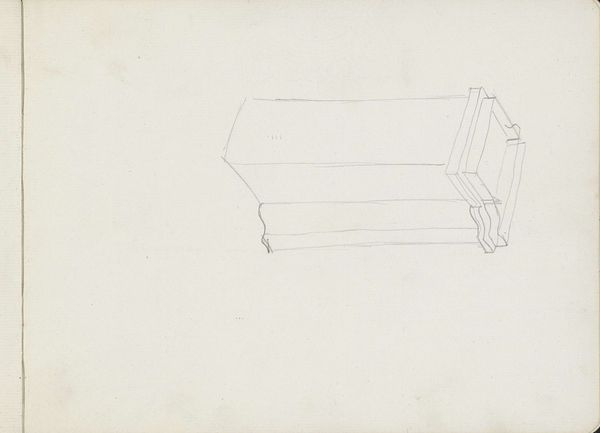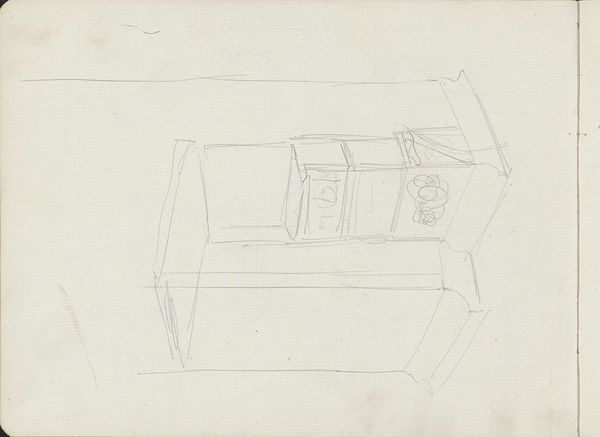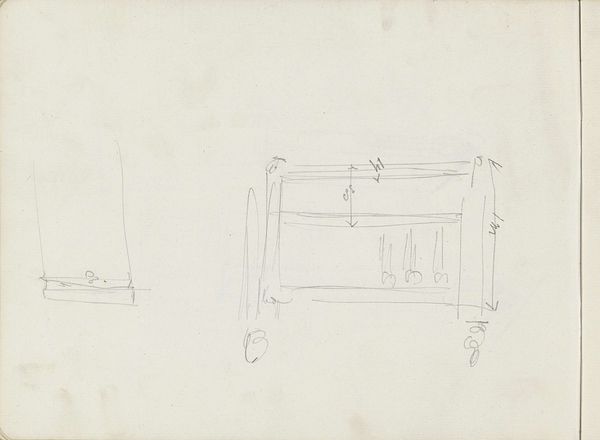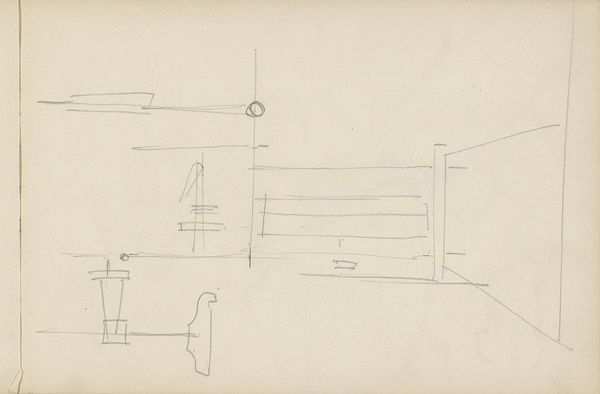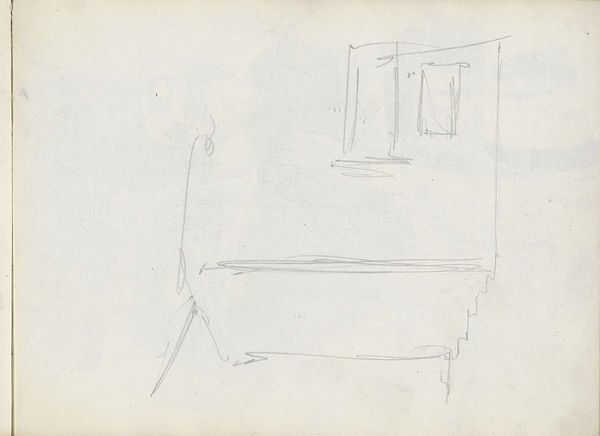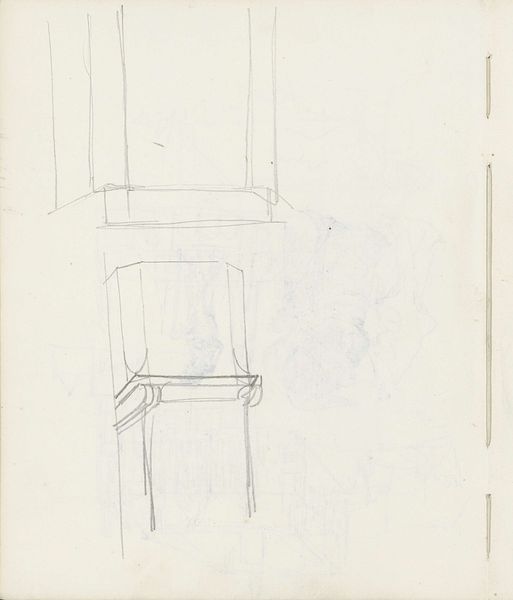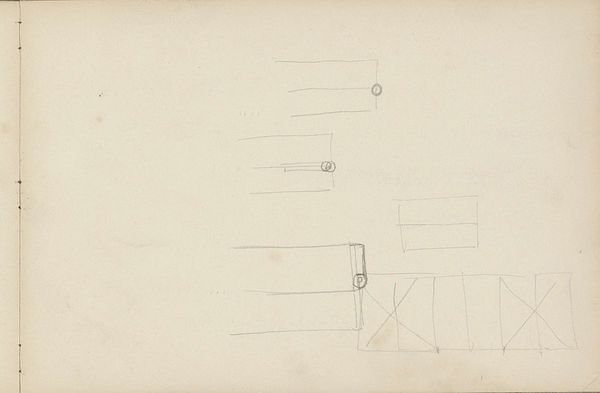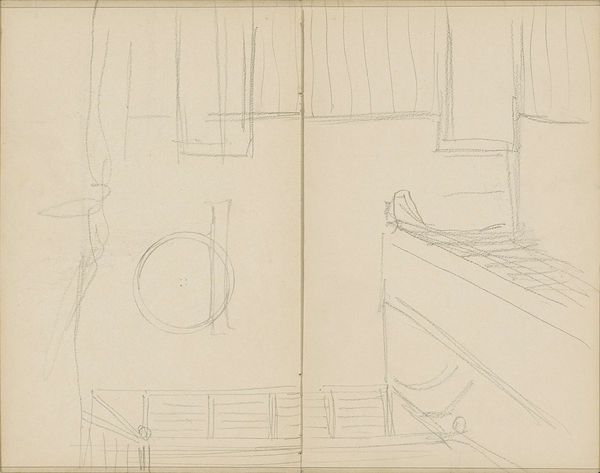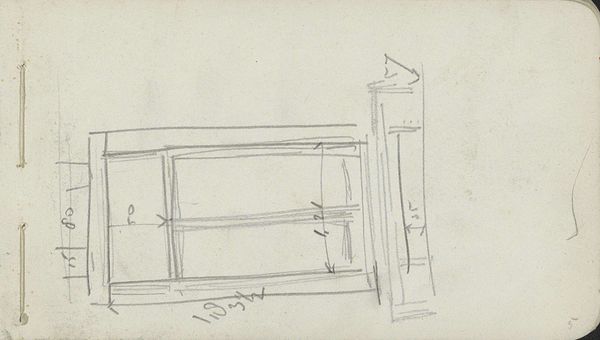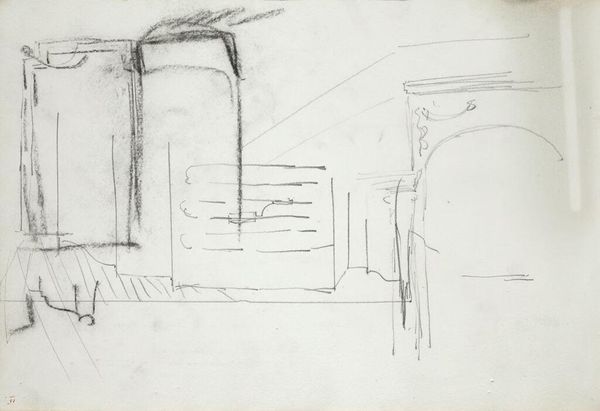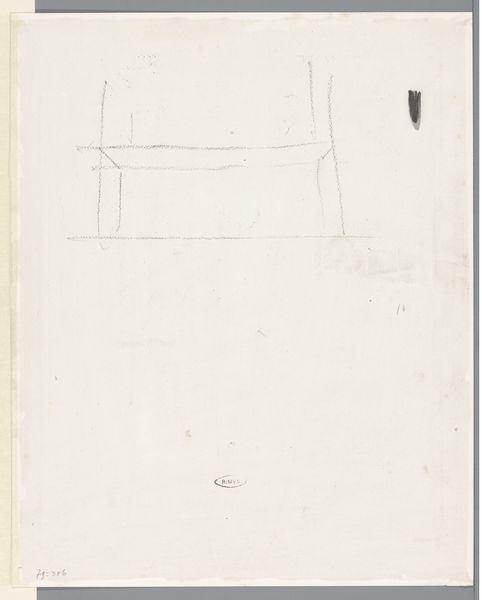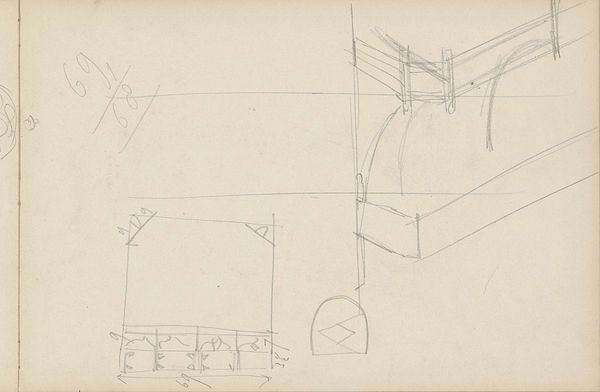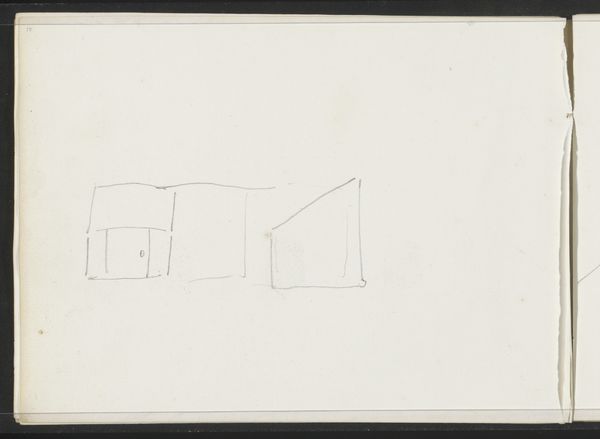
drawing, paper, pencil, architecture
#
drawing
#
art-nouveau
#
paper
#
form
#
sketch
#
pencil
#
line
#
architecture
Copyright: Rijks Museum: Open Domain
Curator: What we’re looking at here is Carel Adolph Lion Cachet’s "Ontwerp voor een kansel," a pencil drawing on paper dating from around 1905 or 1906. It's currently held at the Rijksmuseum. Editor: Stark! Very simple, almost minimalist, but with this haunting quality… I immediately think of something religious and austere. The lines, spare as they are, evoke weight and form. It seems very preliminary, somehow incomplete but intriguing. Curator: Absolutely, it's a design sketch for a pulpit, or “kansel” in Dutch. I think its power lies precisely in its incompleteness. It allows us to witness the artist’s thought process, the initial shaping of the object. It emphasizes the labor of art. Editor: Right! Thinking about the paper itself – the materials available at the time. Was it handmade? Industrially produced? How accessible would paper like this be to an artist like Cachet? And, if this is for a church, who commissioned it? How would that influence the design, down to these faint pencil lines? Was it a collaboration between the architect or master builder and the artist or just one person designing it and building it? All the little things that matter. Curator: Those are fascinating questions, and crucial when considering the Arts and Crafts movement’s emphasis on the integrity of materials and the honesty of labor. The design evokes that in its geometric precision combined with the unworked medium that shows an artist testing forms. Editor: Exactly. Cachet could have gone further, added flourishes, but instead, we’re left with the bare bones. You can imagine all the possible elaborations – the wood, the carvings, the placement within the church itself, all lost to time and open for imagining. I find beauty in that. It’s almost as if its incompleteness embodies what’s to come as an actual pulpit that some will interact with. Curator: I think I see what you mean, it lets the mind create what comes to it freely, which leads me down different paths than most works. The art lets me build my own. Editor: Absolutely, and to contemplate the journey the materials take – the paper from pulp, the pencil from graphite and wood, transformed through the artist's hand into something suggestive and, ultimately, resonant with potential meaning. Curator: Thanks, that insight enriches how I view this design a lot! Editor: My pleasure. Every mark carries echoes of that journey.
Comments
No comments
Be the first to comment and join the conversation on the ultimate creative platform.
